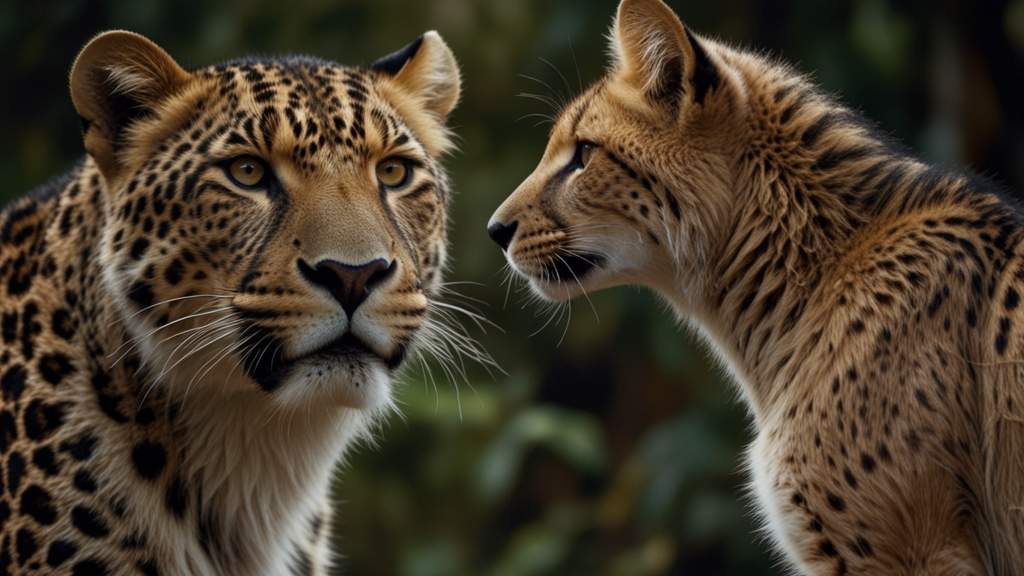Against All Odds: The Fight to Save Endangered Species
In the heart of our planet's diverse ecosystems, a silent struggle persists: the fight to save endangered species. These creatures, ranging from the majestic tiger in Asia's dense forests to the delicate butterfly flitting across North American plains, are on the brink of extinction. While the odds seem insurmountable, a global community of scientists, activists, and ordinary citizens stands resolute, dedicating their lives to this noble cause.
The Magnitude of the Crisis
According to the International Union for Conservation of Nature (IUCN), over 37,400 species are threatened with extinction. This staggering number underscores the urgency of the crisis. From habitat destruction and climate change to poaching and pollution, the threats are multifaceted and complex.
Forests are being razed at an alarming rate, stripping away the habitats of countless species. Climate change, with its unpredictable patterns, further exacerbates the decline by altering ecosystems quicker than many species can adapt. Poaching remains a grave concern, driven by illicit markets for ivory, fur, and exotic pets. Meanwhile, pollution—both chemical and plastic—contaminates water sources and food chains.
Conservation Efforts: A Global Movement
In the face of these challenges, conservation efforts have emerged worldwide, transforming into a robust movement. Organizations such as the World Wildlife Fund (WWF) and the Wildlife Conservation Society (WCS) spearhead initiatives aimed at protecting endangered species and their habitats. Governments have also stepped up, enacting laws and treaties like the Endangered Species Act (ESA) in the United States and the Convention on International Trade in Endangered Species (CITES).
The ESA has been instrumental in the recovery of numerous species, including the American bald eagle and the humpback whale. Its success stories demonstrate that with concerted effort and robust legal frameworks, positive change is achievable.
Innovative Approaches and Technologies
Innovative approaches and cutting-edge technologies are being employed to monitor and protect endangered species. Remote sensing and satellite imagery help track migration patterns and habitat changes. Drones are increasingly used to monitor wildlife activity and enforce anti-poaching laws in real time. Genetic research offers insights into species' health and resilience, aiding in designing more effective conservation strategies.
In a groundbreaking project, scientists successfully cloned a black-footed ferret using preserved cells. This breakthrough in genetic engineering opens new avenues for reviving endangered and even extinct species.
Community Engagement and Awareness
Beyond technological advancements, grassroots community engagement plays a pivotal role. Local communities often serve as the first line of defense against poaching and habitat destruction. Empowering these communities through education and economic incentives fosters a symbiotic relationship between humans and wildlife.
Public awareness campaigns are equally vital. They mobilize global support, generate funding, and influence policy changes. High-profile advocates and documentaries, like Sir David Attenborough's Planet Earth series, have brought the plight of endangered species into the living rooms of millions, sparking a global conversation and inspiring collective action.
"The question is, are we happy to suppose that our grandchildren may never be able to see an elephant except in a picture book?" — Sir David Attenborough
Hope on the Horizon
Despite the daunting challenges, success stories offer a glimmer of hope. Species like the black rhino and the mountain gorilla have seen population increases due to sustained conservation efforts. These stories are a testament to human ingenuity, determination, and compassion.
The fight to save endangered species is far from over. It is a continuous struggle that requires unwavering commitment, collaboration, and innovation. While the odds are challenging, the collective efforts of governments, organizations, scientists, and individuals worldwide illuminate a path towards a more sustainable and harmonious coexistence with the myriad creatures that share our planet.
Conclusion
The fight to save endangered species is a testament to humanity's capacity for empathy and action. It reminds us that, against all odds, we possess the agency to effect meaningful change. As we forge ahead, let us remain steadfast in our resolve to protect the delicate tapestry of life that enriches our world.








